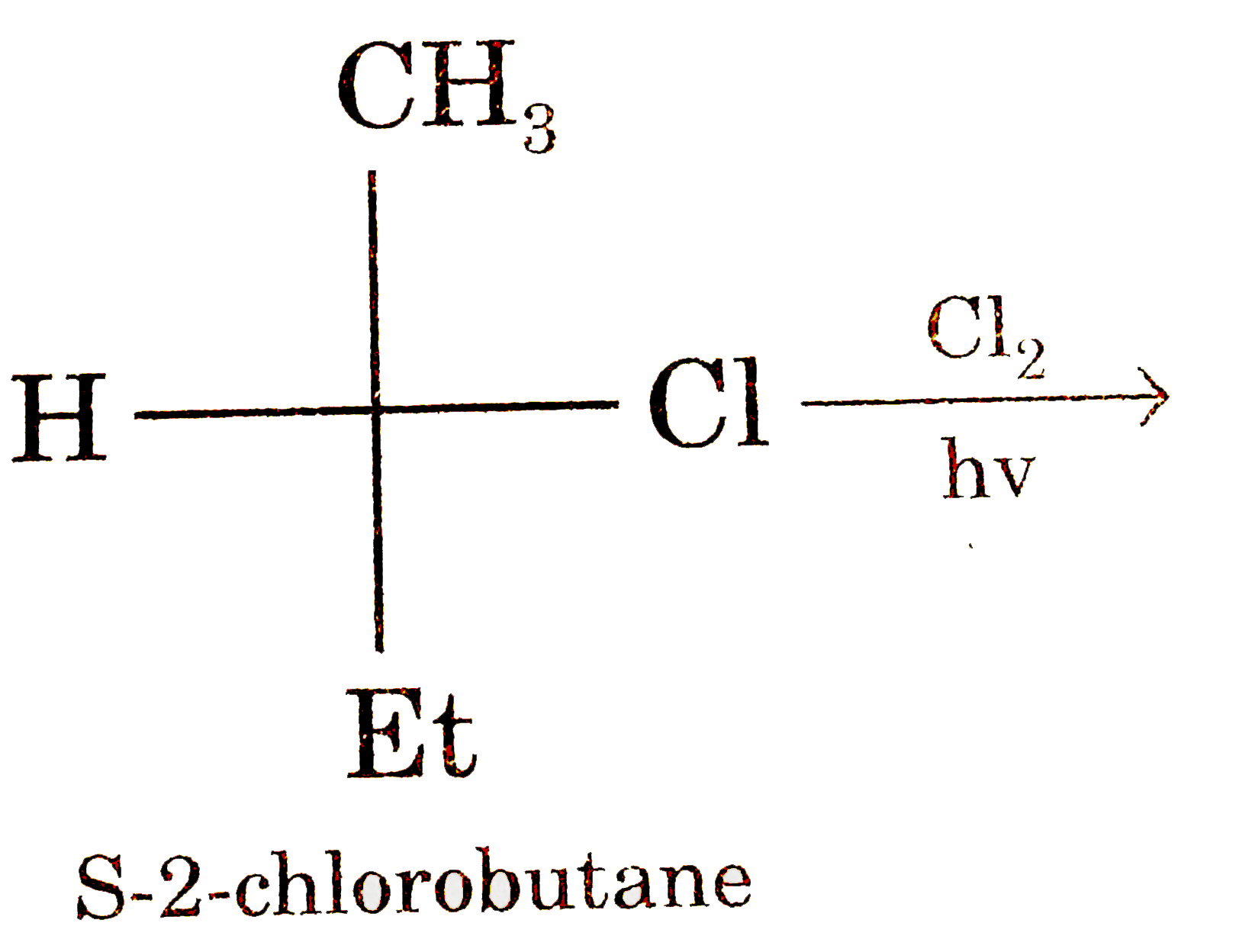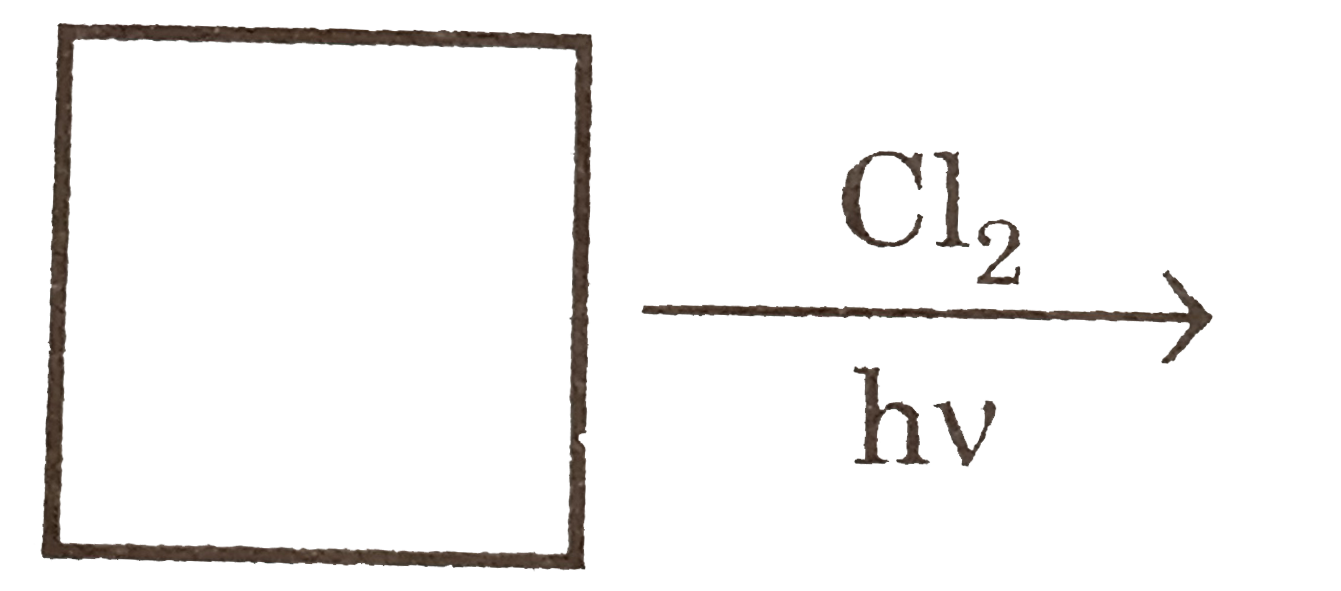CH3CH2CHClCH=CH2 is optically active. Explain why it become optically inactive when reduced with H2/Pt.Solution in Bengali
On reduction, optically active compound is increasing order of rectivity is : CH3CH2Cl<(CH3)2CHCl<(CH3)3CCl.
Topper's Solved these Questions
- HALOAKANES AND HALOARENESBOOK - CHHAYA PUBLICATIONCHAPTER - HALOAKANES AND HALOARENESEXERCISE - Exercise - Fill in the blanks
19 Videos
- HALOAKANES AND HALOARENESBOOK - CHHAYA PUBLICATIONCHAPTER - HALOAKANES AND HALOARENESEXERCISE - Exercise - Short answer type questions
35 Videos
- HALOAKANES AND HALOARENESBOOK - CHHAYA PUBLICATIONCHAPTER - HALOAKANES AND HALOARENESEXERCISE - MCQ Hotspot (More than one correct type)
18 Videos
- GENERAL PRINCIPLES AND PROCESSES OF ISOLATION OF ELEMENTSBOOK - CHHAYA PUBLICATIONCHAPTER - GENERAL PRINCIPLES AND PROCESSES OF ISOLATION OF ELEMENTSEXERCISE - PRACTICE SET 6
10 Videos
- HYDROCARBONSBOOK - CHHAYA PUBLICATIONCHAPTER - HYDROCARBONSEXERCISE - PRACTICE SET 13
16 Videos
Similar Questions
The IUPAC name iof BrCH2CH2CH2Cl is ______.
View SolutionWhich one of the isomeric alkanes of molecular formula C5H12 on photochemical chlorination yield (i) only one monochloride, (ii) 3 isomeric monochlorides, (iii) 4 isomeric monochlorides?
View SolutionChlorobenzene gives aniline with-
View SolutionOut of C and CO which one is a better reducing agent at 673 K and why ?
View SolutionPh−C≡C−CH3Hg2+−−−→H3O+A .Here A is -
View SolutionThe optical rotation of an optically active compound is +20∘. The length of tube is 10cm and the density of solution is 0.4gmml−. The specific rotation of the compound is:
i. +50∘ ii. +500∘ iii. +5∘ iv. +0.5∘
b. Which of the following are optically active compounds and why?
i. Butan-1-ol ii. 2-Chlorobutane
II. Lactive acid iv. 3-Chloropentane
c. Which of the following are optically active and why?
i. CH3CH(Cl)CH3
ii. CH3CH2CH(CH3)COOH
iii. CH3CH2CH(NH2)CH3
iv. CH2OHCH2OH
d. Which of the following are optically active and why?
i. Propan-1-ol , ii. Butan-2-ol
iii. Heptan-4-ol , iv. 3-Aminohexane
v. 2-Chloropentane , vi. 2,2-Dichloropropane
e. Mark (∗) on the asymmetric carbon atom, if any, in the following compounds:
(i) CH3−CHCl−CH2−CH3, ii. CH3−CHOH−CH3.
View SolutionCH3−D∣C∣ C2H5−MgBr+CH3−CH2OH→optically active product 'x'. Here 'x' is :
View SolutionGive the correct order of initials T or F for following statements. Use T if statement is true and F if it is false : Me-CH=C=C=CH-Br is optically active. All optically active compound are chiral. All chiral pyramndal molecules are optically inactive. {:(CH_(3)-CH_(2)-CH_(2)-COOH "and" CH_(3)-underset(COOH)underset(|)"CH"-CH_(3) ),("are positional isomers."):}
View SolutionReaction-1 : CH3−CH2−CH2−CH2−CH3Cl2−−−−−→hv Optically active monochloro products (s) are (R) .
Reaction-2 : Optically active di-chloro products (s) are (S).
Optically active di-chloro products (s) are (S).
Reaction-3 :
Optically active di-chloro product (s) are (P).
Reaction-4 : 2-methoxy propaneCl2−−−−−→hv Optically active monochloro product (s) are (Q).
What is the sum of P+Q+R+S?
View SolutionArrange the following compounds in the increasing order of their boiling points:
CH3CH2CH2CHO,CH3CH2CH2CH2OH,H5C2−O−C2H5,CH3CH2CH2CH3
View SolutionH−CH3∣C∣CH2CH3−NH3 is an optically active amine. Give the possible products when it is treated with nitrous acid. Discuss optical activity of the products.
View Solutionनिम्नलिहित यौगिकों को कवथनांकों के बढ़ते कर्म में व्यवस्थित कीजिए -
CH3CH2CH2CHO,CH3CH2CH2CH2CH2OH,H5C2−O−C2H5,CH3CH2CH2CH3
View SolutionCH_(3)-CH_(2)-CH_(2)-CH_(2)-OH to CH_(3)-CH_(2)-CH=CH_(2)+H_(2)O
View SolutionArrange the following compounds in the increasing order of their boiling points:
CH3CH2CH2CHO,CH3CH2CH2CH2OH,H5C2−O−C2H5,CH3CH2CH2CH3
View SolutionThe total number of optically active compounds from the following list is C_(2)H_(5)NHCH_(3),CH_(3)CH_(2)CH(CH_(3))N(CH_(3))C_(2)H_(5),[Pg(CH_(3))(C_(2)H_(5))overset(+)(N)H]I^(-),[(CH_(3))_(2)(C_(2)H_(5))overset(+)(N)H]I^(-),C_(6)H_(5)(CH_(3))(C_(2)H_(5))overset(+)(N)-O^(-),(CH_(3))(C_(2)H_(5))NCH(CH_(3))_(2) .
View Solution
